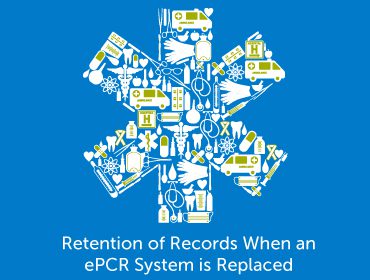
The 1.03 million licensed EMTs, paramedics and other Emergency Medical Services (EMS) patient care professionals in the United States depend on information gained at the scene to make quick and meaningful decisions during the more than 28 million calls they go on each year. Current guidance from the National Association of State EMS Officials (NASEMSO) requires EMS responders to gather onsite information from the patient including items such as onset of symptoms, provocation, pain, symptoms, allergies, medications, past medical history, and events leading up to the 9-1-1 call.
National guidance also recommends that a completed EMS medical record, called Electronic Patient Care Reporting (ePCR), should be provided during the transfer of care from EMS agencies, ambulance operators, and fire departments. Currently, 48 states require 911 ground ambulance services to also submit EMS response and patient care data to a national database.
An ePCR, which typically runs on a tablet in the ambulance, stores assessments, treatments, and narratives. This software, which has recently replaced paper-based documentation, often includes drop-down selections and intake forms that not only speed documentation but also offer reporting and analytics. Like any software, an ePCR sometimes doesn’t meet the needs of the users and ultimately gets replaced.
Decommissioning ePCR Systems while Still Meeting Record Retention Guidelines
When there is a decision to decommission an ePCR system, the legacy data can either be extracted and converted to the new ePCR or migrated and secured into an active archive solution like HealthData Archiver®. As ePCR data conversions can become costly and complex, an active archive is a good alternative for keeping records accessible, usable and secure for the duration of the retention period. Often, the best practice is to convert demographic and key clinical data dating back 24-36 months to the new ePCR and archiving as well to store a compliant and comprehensive record.
In short, active archiving is a business-essential strategy for EMS agencies, ambulance operators and fire departments to effectively manage legacy health data when an ePCR system replacement occurs.
As a proven and experienced health data management company focused exclusively on healthcare, Harmony Healthcare IT is familiar with more than 550 unique software brands that store medical data.
If you’re ready to talk about data management for your legacy ePCR records, let’s connect.







